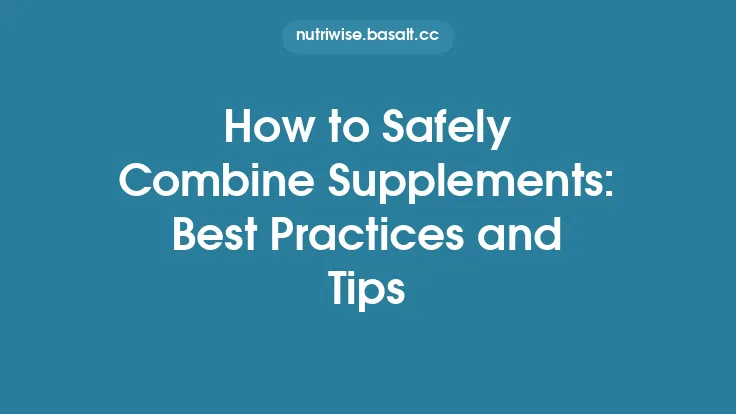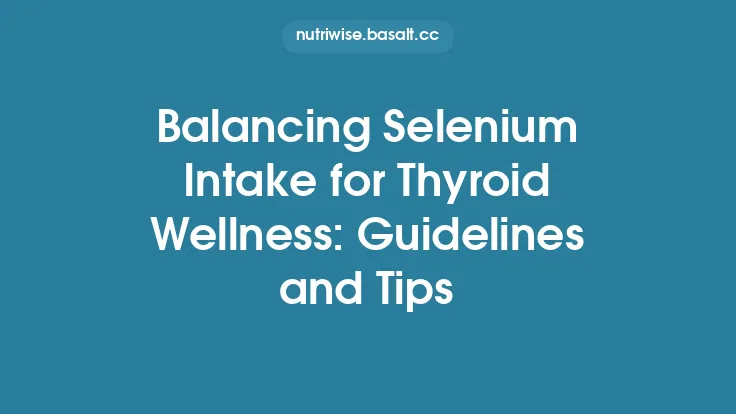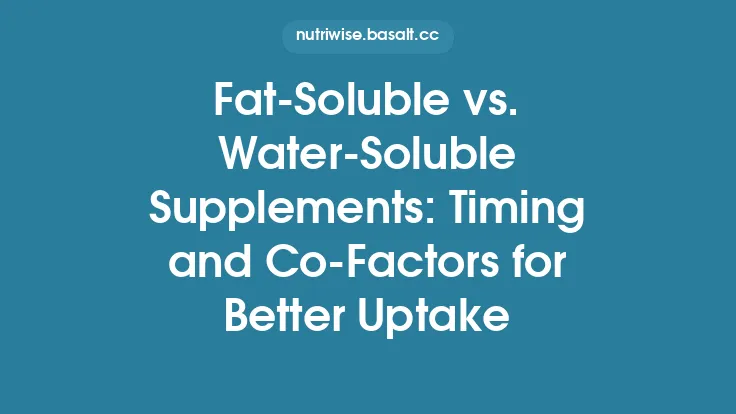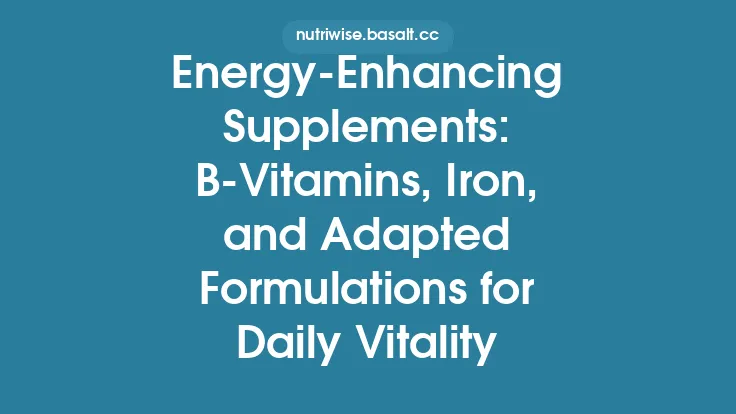Omega‑3 supplements are prized for their health‑supporting properties, but their potency can fade quickly if they are not stored properly. Even the most premium products can become oxidized, develop off‑flavors, and lose their nutritional value when exposed to unfavorable conditions. Understanding the science behind oxidation, the variables that influence shelf‑life, and the practical steps you can take to protect your supplements will help you get the most out of every dose.
Why Oxidation Matters for Omega‑3s
Omega‑3 fatty acids are polyunsaturated, meaning they contain multiple double bonds in their carbon chain. These double bonds are chemically reactive sites that readily interact with oxygen, heat, light, and metal ions. When oxidation occurs, the fatty acids break down into primary and secondary oxidation products:
- Primary products – hydroperoxides, measured as peroxide value (PV).
- Secondary products – aldehydes, ketones, and malondialdehyde, often assessed by anisidine value (AV) or thiobarbituric acid reactive substances (TBARS).
Both sets of compounds can impart a rancid taste and smell, and some secondary oxidation products have been linked to cellular stress when consumed in large amounts. Therefore, maintaining low PV and AV throughout the product’s life is essential for preserving both palatability and safety.
Factors That Influence Shelf‑Life
| Factor | How It Affects Stability | Typical Impact on Shelf‑Life |
|---|---|---|
| Temperature | Higher temperatures accelerate the kinetic energy of molecules, increasing the rate of oxidation. | Each 10 °C rise can double the oxidation rate (Q10 effect). |
| Light exposure | UV and visible light can generate free radicals that attack double bonds. | Light‑sensitive formulations may lose up to 30 % of EPA/DHA in 6 months if stored in clear containers. |
| Oxygen presence | Dissolved O₂ in liquids or headspace O₂ in capsules provides the substrate for oxidation. | Even 0.5 % O₂ in headspace can halve the shelf‑life compared with nitrogen‑flushed packaging. |
| Moisture | Water can catalyze hydrolytic reactions and promote microbial growth in liquid forms. | Moisture uptake can increase PV by 10–20 % in a month for poorly sealed bottles. |
| Metal ions | Trace iron or copper act as pro‑oxidants, catalyzing radical formation. | Presence of 1 ppm Fe can increase PV 3‑fold over 3 months. |
| Formulation type | Softgels, liquids, gummies, and powders each have distinct exposure profiles. | Liquids generally have the shortest shelf‑life; powders can be more stable if moisture‑controlled. |
Packaging Technologies That Extend Shelf‑Life
- Opaque, UV‑blocking containers – Amber glass or high‑density polyethylene (HDPE) bottles block most UV radiation, dramatically slowing photo‑oxidation.
- Nitrogen or argon flushing – Displacing oxygen in the headspace reduces the substrate available for oxidation. Many premium softgel bottles are sealed under an inert gas blanket.
- Liposomal or micro‑encapsulation – Encapsulating the oil in a protective lipid or polymer matrix isolates it from oxygen and light, extending stability especially in liquid or gummy formats.
- Antioxidant fortification – Adding natural antioxidants such as mixed tocopherols (vitamin E), rosemary extract (carnosic acid), or ascorbyl palmitate scavenges free radicals and lowers PV. The amount and type of antioxidant must be balanced to avoid off‑flavors.
- Sealed, single‑dose sachets – For powders or liquids, individual sachets eliminate repeated exposure to air each time the product is opened.
Shelf‑Life Expectations by Product Form
| Form | Typical Shelf‑Life (Unopened) | Recommended Storage Conditions |
|---|---|---|
| Softgel capsules | 18–24 months | Cool, dry, dark place; ≤ 25 °C |
| Liquid fish‑oil (bottles) | 12–18 months | Refrigerate after opening; keep in dark cabinet |
| Krill oil softgels | 12–18 months | Same as fish‑oil softgels; avoid heat |
| Algal oil capsules | 18–24 months | Similar to fish‑oil; some formulations are more heat‑stable |
| Gummy chews | 12–15 months | Store at ≤ 20 °C; avoid humidity |
| Powdered omega‑3 blends | 24 months (dry) | Keep sealed; store in a moisture‑proof container |
These timelines assume the product is stored under the manufacturer’s recommended conditions. Deviations—especially exposure to heat or light—can shorten the usable period dramatically.
Practical Storage Tips for Consumers
- Choose the right spot – A pantry shelf away from the stove, oven, or direct sunlight is ideal. If the ambient temperature often exceeds 25 °C (77 °F), consider a refrigerator.
- Mind the door – Frequent opening of a cabinet or fridge introduces temperature fluctuations and humidity. Store supplements in a drawer or a dedicated cabinet that stays closed most of the time.
- Seal tightly – After each use, ensure the cap is screwed on firmly. For liquid bottles, wipe the rim dry before resealing to prevent moisture ingress.
- Avoid the freezer unless specified – Freezing can cause softgel shells to become brittle and crack, exposing the oil to air. Some liquid formulations are stable at –20 °C, but only if the label explicitly permits freezing.
- Use a desiccant – If the product comes with a silica gel packet, keep it in the bottle (provided it does not contact the supplement). Replace it if it becomes saturated.
- Travel smart – Pack supplements in an insulated pouch with a small ice pack for short trips. For longer journeys, a portable cooler or a temperature‑controlled travel bag is advisable.
- Rotate stock – Practice “first‑in, first‑out” (FIFO). Place newer bottles behind older ones so you consume the older product before it reaches its expiration date.
Recognizing When an Omega‑3 Supplement Has Gone Bad
Even with careful storage, oxidation can still occur. The following signs suggest the product may have deteriorated:
- Rancid odor – A sharp, paint‑like, or “fishy” smell that is stronger than the mild scent of fresh oil.
- Off‑taste – A bitter, metallic, or sour flavor when tasting a softgel or liquid.
- Visible changes – Cloudiness, separation, or a yellowish tint in liquids; softgel shells that appear swollen or leaky.
- Texture shift – Gummies that become sticky or overly hard, indicating moisture loss or gain.
- Expired date – While not an absolute guarantee of spoilage, products past their “best‑by” date have a higher probability of oxidation.
If any of these cues are present, it is safest to discard the supplement. Consuming oxidized omega‑3s does not provide the intended nutritional benefit and may introduce unwanted oxidative compounds.
Testing Oxidation: What the Numbers Mean
For those who want a more scientific assessment, two standard metrics are used:
- Peroxide Value (PV) – Expressed in milliequivalents of active oxygen per kilogram of oil (meq O₂/kg). A PV < 5 meq O₂/kg is generally considered fresh; values > 10 meq O₂/kg indicate significant primary oxidation.
- Anisidine Value (AV) – Measures secondary aldehydic products. An AV < 20 is acceptable for most supplements; higher values suggest advanced degradation.
Some third‑party labs also calculate the Totox value (Totox = 2 × PV + AV) to provide a single figure of overall oxidation. A Totox < 26 is often used as a quality benchmark.
While most consumers do not perform these tests themselves, being aware of the thresholds can help you evaluate third‑party testing results or certifications displayed on product packaging.
Extending Shelf‑Life After Opening
Once a bottle is opened, the internal environment changes:
- Increased oxygen exposure – Each time the cap is removed, fresh air enters.
- Potential moisture ingress – Humidity from the surrounding air can settle inside.
- Temperature swings – Opening a refrigerator door or moving the bottle to a warmer area can cause condensation.
To mitigate these effects:
- Transfer to a smaller container – If you have a large bottle and only use a few doses per week, moving the remaining product to a smaller, airtight amber bottle reduces headspace and oxygen.
- Add a drop of antioxidant – For liquid oils, a few drops of natural tocopherol (vitamin E) can replenish antioxidant capacity, but only do this if the manufacturer’s guidelines allow it.
- Limit exposure time – Open the bottle just long enough to dispense the dose, then reseal promptly.
- Store in a cold pack – For liquids, placing the bottle in a small insulated cooler inside the refrigerator can keep the temperature more constant.
Disposing of Expired or Rancid Omega‑3 Supplements
Improper disposal can harm the environment, especially for fish‑oil products that contain marine-derived lipids. Follow these steps:
- Check local regulations – Some municipalities treat dietary supplements as household waste, while others have specific collection points for oils.
- Seal the product – Place the expired supplement in a sealed plastic bag to prevent leakage.
- Consider composting – If the supplement is purely plant‑based (e.g., algal oil) and free of synthetic additives, some composting programs may accept it. Verify with your compost facility first.
- Avoid flushing – Never pour large quantities down the drain, as it can clog plumbing and affect wastewater treatment.
Summary of Best Practices
| Action | Reason | Implementation |
|---|---|---|
| Store in a cool, dark place | Reduces temperature‑ and light‑induced oxidation | Pantry ≤ 25 °C, away from windows |
| Keep containers tightly sealed | Limits oxygen ingress | Screw caps firmly, wipe rims |
| Use opaque or UV‑blocking packaging | Prevents photo‑oxidation | Choose amber glass or HDPE |
| Refrigerate liquids after opening | Slows oxidative reactions | Place bottle in fridge, not freezer |
| Rotate stock (FIFO) | Ensures older product is used first | Place new purchases behind older ones |
| Monitor for rancid odor/taste | Detects oxidation early | Discard if off‑flavors appear |
| Consider antioxidant‑fortified products | Provides internal protection | Look for added tocopherols or rosemary extract |
| Use single‑dose sachets for travel | Minimizes repeated exposure | Pack only needed doses in insulated pouch |
By respecting the chemical sensitivity of omega‑3 fatty acids and applying these storage strategies, you can preserve the potency, flavor, and safety of your supplements throughout their intended shelf‑life. Proper handling not only maximizes the value of your investment but also ensures that each dose delivers the nutritional benefits you expect.





